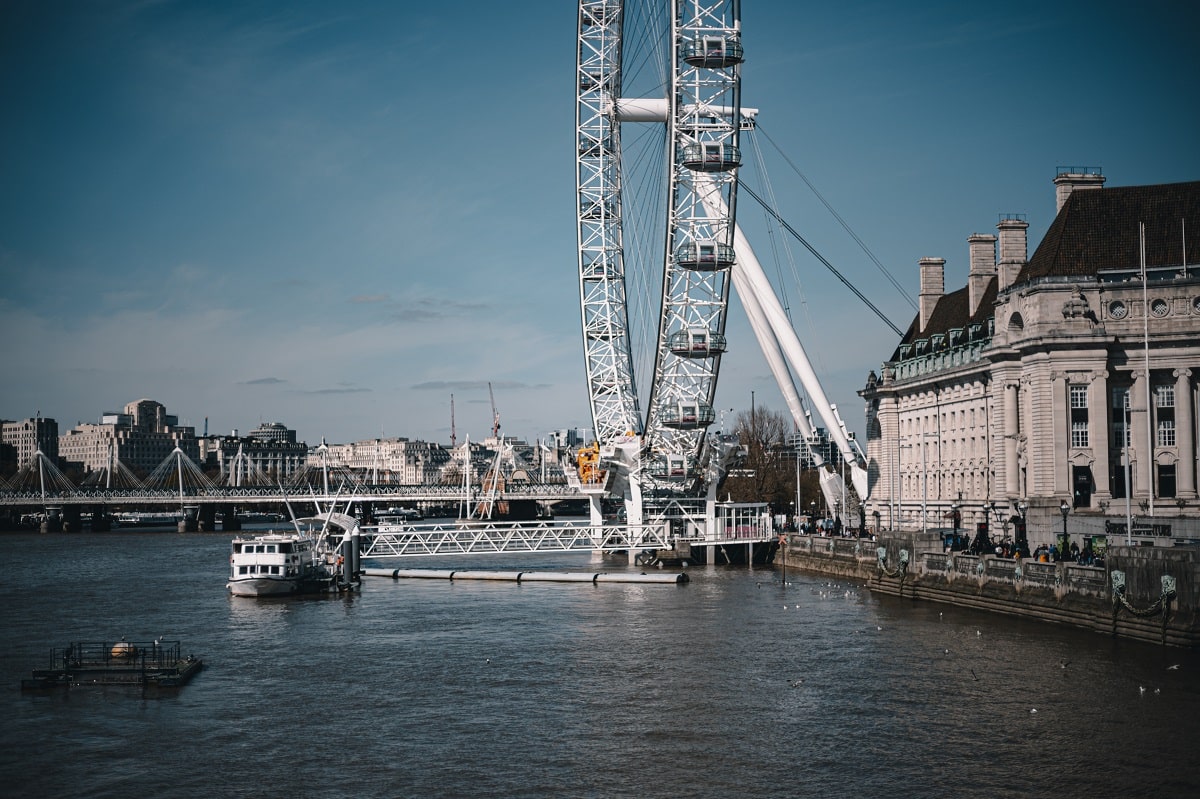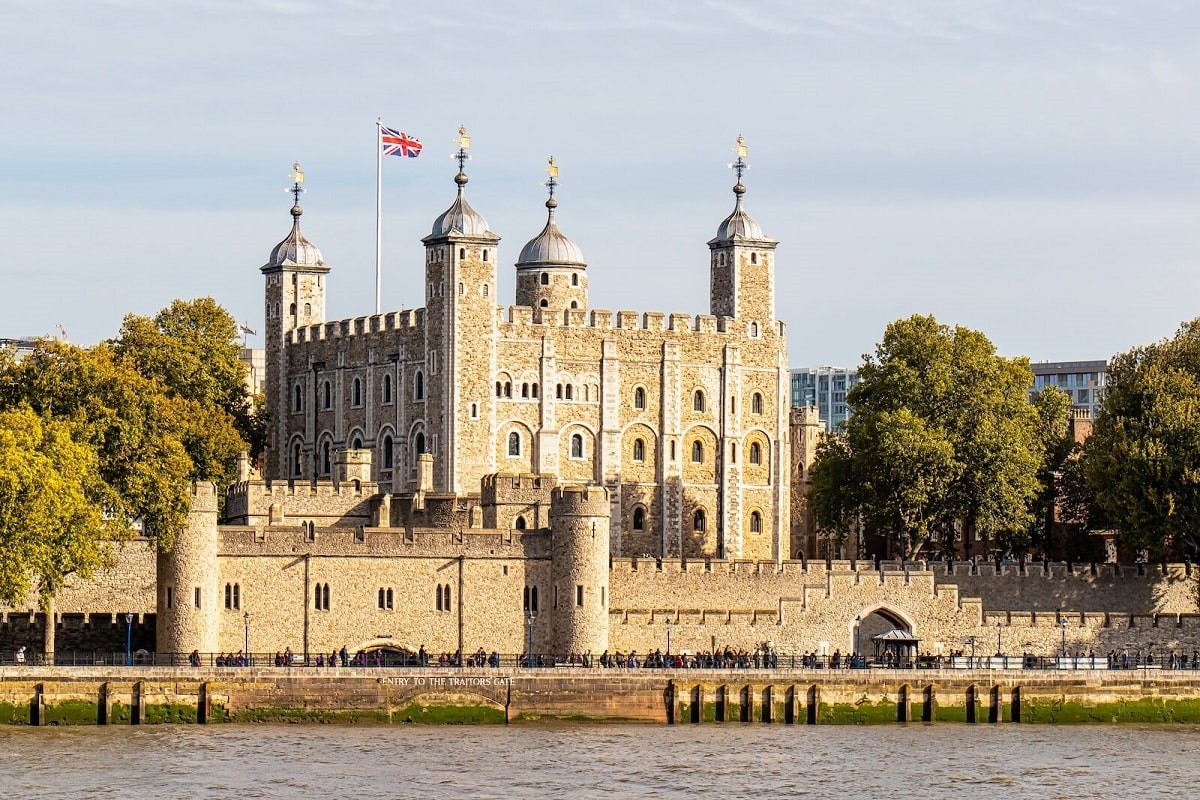1
HOME > Travel >
UNCOVERING LONDON’S MOST ICONIC LANDMARKS
Written by Menswear Style in Travel on the 25th August 2023

London, the pulsating heart of the United Kingdom, is a city steeped in history, culture, and architectural marvels that have withstood the test of time. From the regal splendor of Buckingham Palace to the towering majesty of the Shard, London's skyline is a testament to human ingenuity and creativity. But beyond the postcard-perfect images lies a tapestry of stories waiting to be unraveled. Join us on a journey as we peel back the layers of London's most iconic landmarks, delving into the secrets, history, and significance that make each one a living testament to the city's enduring spirit. Here are London’s most iconic landmarks:
The London Eye and Southbank
The London Eye, an iconic Ferris wheel situated on the banks of the River Thames, stands as a symbol of modern London and offers breathtaking panoramic views of the city's skyline. Opened to the public in 2000 to mark the new millennium, this engineering marvel has since become one of the city's most visited attractions. You can book your London Eye ticket to experience a captivating journey that takes you high above the city, allowing you to soak in the beauty of historic landmarks such as Tower Bridge, Buckingham Palace, and the Shard while enjoying a unique perspective of London's ever-evolving landscape. Adjacent to the London Eye, the vibrant Southbank area features a plethora of cultural attractions, dining options, and entertainment venues, making it a quintessential stop for tourists and locals alike.

The Tower of London
The Tower of London, a UNESCO World Heritage Site, epitomizes London's rich history and architectural grandeur. Founded by William the Conqueror in 1066, it has served as a royal palace, a prison, and a treasury throughout the centuries. This formidable fortress boasts a stunning collection of buildings, including the White Tower, with its Norman architecture, and the elegant Crown Jewels housed in the Jewel House. It has witnessed countless historic events, including the execution of Anne Boleyn and the mysterious disappearance of the Princes in the Tower. Today, visitors can explore its storied past through exhibitions and guided tours, making it a must-visit landmark for history enthusiasts.
The Shard
The Shard, an architectural masterpiece soaring above the London skyline, redefines the city's modern aesthetic. Designed by architect Renzo Piano, this gleaming glass skyscraper stands at a staggering 310 meters (1,016 feet), making it the tallest building in the United Kingdom. Completed in 2012, it offers a striking juxtaposition to London's historic landmarks. Its 95 stories house a blend of offices, luxury apartments, restaurants, and a renowned Shangri-La Hotel. The Shard's pièce de résistance is its 72nd-floor open-air observation deck, offering unparalleled views of London's sprawling metropolis, making it a contemporary symbol of the city's ever-evolving architectural landscape.

Buckingham Palace
Buckingham Palace, the official residence of the British monarch in London, stands as an enduring symbol of regal splendor and tradition. Nestled in the heart of London, this grand neoclassical palace has served as the monarch's principal residence since the reign of Queen Victoria. Its iconic balcony has witnessed historic moments, from royal weddings to jubilant public appearances. The State Rooms, open to the public during the summer months, showcase opulent interiors adorned with priceless art and exquisite furnishings. The Changing of the Guard ceremony at the palace gates is a beloved attraction, drawing crowds from around the world to witness a slice of British pageantry.
Big Ben and the Houses of Parliament
Big Ben, officially known as the Elizabeth Tower, and the adjacent Houses of Parliament form an iconic silhouette along the banks of the River Thames. This neo-Gothic masterpiece represents the very heart of British governance and democracy. Completed in 1859, Big Ben's chimes have become an auditory symbol of London. The Houses of Parliament, also known as the Palace of Westminster, house the UK's legislative body, the Parliament. Its intricate architecture, highlighted by the Victoria Tower and Central Lobby, echoes centuries of political history and debates. Together, these landmarks are a testament to the enduring strength of British democracy and an integral part of London's architectural and political heritage.

The British Museum
The British Museum is a treasure trove of human history and culture, offering an unparalleled journey through time and civilizations. Established in 1753, it houses a vast and diverse collection of over eight million artifacts spanning centuries and continents. The museum's imposing neoclassical façade welcomes visitors into a world of ancient wonders, from the Rosetta Stone to the Egyptian mummies and the Elgin Marbles. Its galleries exhibit art, artifacts, and relics from every corner of the globe, providing insight into the collective heritage of humanity. The British Museum is not just a place for preservation but a vibrant hub for education, research, and appreciation of our shared history and cultural diversity.
London's iconic landmarks are a testament to the city's rich history, cultural diversity, and architectural innovation. From the Tower of London's ancient grandeur to The Shard's modern skyline dominance, these landmarks represent both tradition and progress. Buckingham Palace and the Houses of Parliament evoke images of British monarchy and democracy, while the British Museum showcases the global tapestry of human civilization. Together, these landmarks weave a captivating narrative of London's past, present, and enduring significance on the world stage.
Trending
2
3
4
5
6
7
8
9
10









